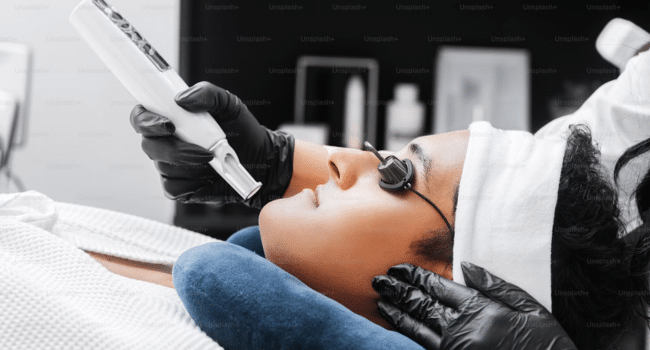Table of Contents
Introduction to Cold Laser Therapy
The realm of alternative therapies is vast and varied, offering a plethora of options for individuals seeking relief from various ailments. Among these, cold laser therapy emerges as a non-invasive and innovative treatment that has garnered attention for its effectiveness in managing pain and fostering healing. For those new to this concept, the journey into understanding how a cold laser therapy device works can be both fascinating and enlightening.
In this beginner’s guide, we’ll take a step-by-step approach to comprehend the science behind cold laser therapy, explore its applications, and learn about the benefits it can bring to your health and wellness. As we embark on this journey, let’s delve into the fundamental principles that make cold laser therapy a promising option for those seeking alternative or supplementary treatments.
Understanding the Basics: What is Cold Laser Therapy?
Cold laser therapy, also known as low-level laser therapy (LLLT), is a form of light-based treatment used to alleviate pain and promote healing in various conditions. Unlike surgical or aesthetic lasers that generate heat and can destroy tissue, cold laser therapy devices emit low levels of light that do not significantly increase tissue temperature. Hence, the term cold in cold laser therapy.
How Cold Laser Therapy Devices Work
The science behind a cold laser therapy device is rooted in its ability to emit specific wavelengths of light that penetrate the skin without causing damage. Once absorbed by the target tissue, the photons from the laser light interact with cells to promote healing and reduce inflammation. This process, known as photobiomodulation, is the cornerstone of how cold laser therapy provides its therapeutic effects.
The light emitted by the device is absorbed by mitochondria, the powerhouse of cells, leading to an increase in cellular energy production.
This boost in energy subsequently accelerates the body’s natural healing processes, including:
– Increasing circulation
– Reducing inflammation
– Stimulating tissue repair and regeneration
– Enhancing immune response
– Releasing endorphins and reducing pain perception
Applications of Cold Laser Therapy
Cold laser therapy has been employed in treating a wide range of conditions. As research continues to expand our understanding, the list of applications grows.
Some of the common conditions where cold laser therapy is used include:
– Arthritis and joint pain
– Tendonitis
– Sprains and strains
– Back and neck pain
– Carpal tunnel syndrome
– Wound healing
– Fibromyalgia
– Nerve pain and neuropathy
The actual treatment process typically involves placing the cold laser therapy device directly over the affected area for a specified period, which can range from seconds to minutes, depending on the condition being treated and the power of the device.
Safety and Side Effects
One of the most significant advantages of cold laser therapy is its safety profile. Being non-invasive and drug-free, it poses minimal risks to patients. Side effects are rare, but as with any therapy, it’s essential to consult with a qualified healthcare professional before beginning treatment. Ensuring the device is used correctly and at the appropriate settings for your specific condition is key to maximizing the benefits while minimizing potential risks.
Choosing a Cold Laser Therapy Device
When selecting a cold laser therapy device, several factors should be considered:
– Wavelength: Different wavelengths penetrate tissue to varying depths, so choosing a device with the appropriate wavelength for your needs is crucial.
– Power: This determines how much light is emitted and how quickly a treatment can be delivered.
– FDA clearance: Ensure you’re choosing a device that has been cleared by regulatory agencies such as the FDA.
– Quality: As with any medical device, quality matters. Looking for reputable brands or suppliers, like journeys holisticlife, can ensure you receive a device that’s reliable and effective.
Incorporating Cold Laser Therapy into Your Wellness Regimen
For those interested in integrating cold laser therapy into their health routine, it’s vital to approach it as a complement to other treatments and lifestyle practices. Cold laser therapy can be a part of a holistic approach to wellness, enhancing the effects of conventional therapies, physical therapy, and proper nutrition.
It’s always recommended to work with a professional who can guide you through the process and tailor a treatment plan specific to your needs. Many practitioners, including those at journeys holistic life, offer personalised services to ensure you receive the most out of cold laser therapy.
Conclusion: Embracing the Healing Power of Light
Cold laser therapy presents an exciting frontier in the landscape of pain management and tissue healing. By understanding how it works and considering its applications, individuals can make informed choices about incorporating this therapy into their healthcare journey.
Whether seeking relief from chronic pain, accelerating recovery from an injury, or exploring alternative therapies, cold laser therapy offers a gentle yet effective treatment option worth considering. With the information provided in this beginner’s guide, you’re now better equipped to understand and explore the benefits of cold laser therapy. Remember, the journey to optimal health is a personal one, and introducing innovative treatments like cold laser therapy can be an integral part of that journey, especially when guided by experts at journeys holisticlife.
Read more on KulFiy
An All-inclusive Beginners Guide On Laser Therapy Training
Unlock Smooth Skin: The Ultimate Guide To Laser Hair Removal
The Future of Psychology: Benefits of Virtual Reality Therapy
